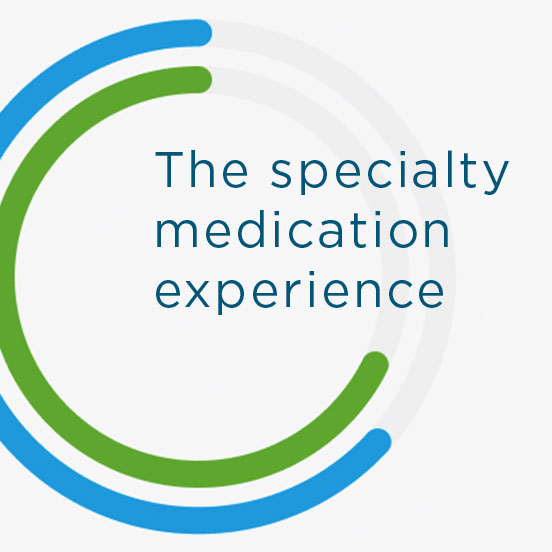This summer, 501 specialty pharmacists and prescribers shared their thoughts with us in a survey about what it’s like to prescribe and fill specialty medications, and how to improve the process. From diagnosis to treatment, overcoming these challenges can keep specialty prescriptions moving.

Obstacles & Opportunities
A deeper look at the path to specialty medication reveals the impediments pharmacists and prescribers share.
Some of these medications are “miracle drugs,” as Joel Helle of CVS Specialty said on our podcast about innovation in specialty therapy. Helle’s son has Crohn’s disease, which causes chronic inflammation of the digestive tract, and can cause a range of symptoms, including abdominal pain and fatigue. His son “never had another issue” once he went on specialty medication.
But miracle drugs come at a cost.
Of all new medications launched in the past five years, most were specialty medications. Many are life-changing for patients, but they are expensive. It’s not unusual to see six-figure price tags. Add the time and effort it takes to prescribe and fill these medications, which can delay treatment and exacerbate the patient’s anxiety—particularly if newly diagnosed—and it’s clear the process could be improved.
Grasp all the information
For many providers, the patient’s medical record and clinical information is like an unfinished jigsaw puzzle: incomplete.
Pharmacists collaborate with prescribers to help complete the prior authorization, but when the pharmacist doesn’t have all the information from the prescriber, the whole process is delayed.
In the survey, three of four pharmacists (and two of three prescribers) say that incomplete forms are an issue when they’re trying to obtain prior authorization for specialty medications, and most pharmacists (70%) and prescribers (64%) generally feel that missing information impedes the prior authorization process.
Speed time to therapy
Incomplete information bogs down the process.
Most pharmacists (87%) think it should take less than two weeks to get a patient started on a specialty medication, but only 33% report that it does. It’s much the same for prescribers. The result is that for many (if not most) patients, it takes at least two weeks, and sometimes a month or more, to go from diagnosis to therapy.
That’s a long time to wait.
To add insult to injury, over half of prescribers say the task of sending a specialty prescription to the right pharmacy—as simple as that may seem—can add delay and affect the patient’s medication adherence.
Access to patient-specific benefits & coverage
Nearly all pharmacists believe that patient-specific benefit information is important and access to it would be a great benefit—not just for patients, but for the care team. Access to benefits (and coverage) helps overcome the twin challenges of missing information and delayed time to therapy.


 Dean Riggott Photography
Surescripts
Dean Riggott Photography
Surescripts






